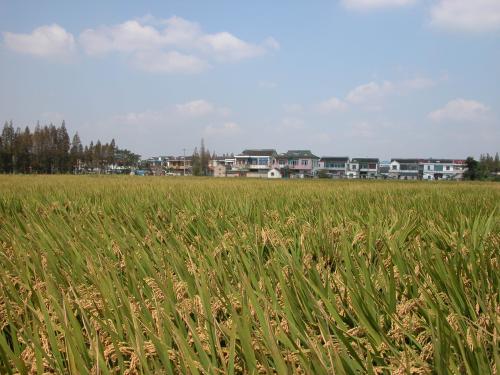A common plant virus that transforms plant viruses into nano-sized agricultural materials beneficial to crop growth.
In order to reduce the harm caused by diseases and insect pests, farmers will cooperate with the crop growth cycle and apply pesticides appropriately. As most pesticides are not specific, in case of improper application, it may destroy the food web around the farmland, and then affect the balance of the surrounding ecosystem. With the rise of the awareness of environmental protection and the introduction of the concept of safe use and management of pesticides, in addition to eliminating agricultural pests and regulating the growth of agricultural and forestry crops, we should also avoid causing the load on the regional environment. Therefore, the application of pesticides is also gradually towards the thinking of precision farming (precision farming) management and practice. In order to accurately apply pesticides to agricultural land and reduce environmental impact, the research team of the University of California, San Diego (University of California, San Diego) used plant viruses as drug delivery carriers to develop highly permeable nanopesticide (nanopesticide).
In order to develop materials with local sustained release and easy degradation in the environment, the research team focused on the development of nano-scale materials. Different from the previous synthetic nanomaterials, the research team used plant virus particles as drug carriers and selected tobacco micro-green mosaic virus (tobacco mild green mosaic virus, referred to as TMGMV), cowpea mosaic virus (cowpea mosaic virus, referred to as CPMV) and acid pulp mosaic virus (acid pulp mosaic virus, referred to as PhMV) as research materials, and mesoporous silica nanoparticles (mesoporous silica nanoparticles). MSNPs), poly (lactic acid-co-glycolic acid) (poly (lactic acid-co-glycolic acid), PLGA) and other common drug delivery systems were compared. The team first measured the mobility (mobility) of these materials in the soil medium, and combined with computer simulation of the moving depth of the material, the appropriate dosage, drug release time and other data found that tobacco green mosaic virus and cowpea mosaic virus can spread to the soil 30 cm below the surface, and accurately slowly release nematodes to effectively control nematodes harmful to plant roots. Synthetic nanomaterials can only move to a depth of 12 centimeters below the soil, providing more comprehensive protection for deep-rooted crops.
In the face of better moving effect, the team inferred that this may be related to the special geometric structure and chemical composition of the virus surface, so that the viral material can easily penetrate the soil pores. Among these geometric structures, the long rod-shaped tobacco micro-green mosaic virus is better than other spherical nanomaterials, and its rod-shaped surface has a variety of chemicals, which enables it to interact with different soil mediums. Therefore, the nanomaterial can have a better performance in the soil.
The research model established by the research team helps to improve the research and development process of other biological materials, requiring simple equipment to condense the research that would have taken one month to four days with computer-aided simulation. This study also makes a significant contribution to precision agriculture (precision agriculture), pest control and management techniques and environmental safety.
The study was funded by the National Science Foundation (NSF) and the National Institutes of Health (NIH).

- Prev

Planting peaches: peaches were affected by high temperature at the beginning of the year, and applications for cash assistance will be accepted from now on.
With regard to the case of peach damage caused by high temperature (delayed) in Jianshi Township, Hsinchu County from February to March this year, the Council of Agriculture announced on the 24th that Jianshi Township, Hsinchu County, was a cash relief area for peach agricultural natural disasters with the word No. 1081010148, and since May 25, 108.
- Next

What is the impact of the Organic Agriculture Promotion Law on agriculture after the formal implementation of the Organic Agriculture Promotion Law
The Law on the Promotion of Organic Agriculture was promulgated on May 30th of the last (2018) year, and tomorrow (30) will be the official date for the implementation of the law. In view of the illegal occupation of agricultural land by factories, Chen Jizhong, chairman of the Council of Agriculture, stressed that "agricultural land should be absolutely used for agricultural use and should not harm agricultural land."
Related
- A one-day flower show brings 130 million yuan in orders! Nanhai, this Phalaenopsis exhibition is amazing
- What do the flower language and meaning of Lutheran tree mean? Precautions for planting Lutheran tree
- Encounter Chaoshan Kongfu tea, not without this cup of Phoenix single clump
- The durian market in Vietnam and Thailand is flooded. The price of imported durian has plummeted by 30-40% in a month.
- Shanghai solved the problem of local vegetable supply by planting 80,000 mu of green leafy vegetables.
- Wageningen University has become the best agricultural university in the world for the seventh time in a row.
- The strongest export season of South African grapes is full of challenges, with exports to Russia falling sharply by 21%.
- Sri Lanka is on the verge of bankruptcy, "Tea for debt" Organic Agriculture Revolution aggravates the Food crisis?
- Turning waste into earthworm manure and worm manure into organic fertilizer-A new choice for auxiliary farming
- Organic rice growers shoulder the responsibility of nurturing agricultural talents! Yinchuan Sustainable Farm with Organic Life Camp

